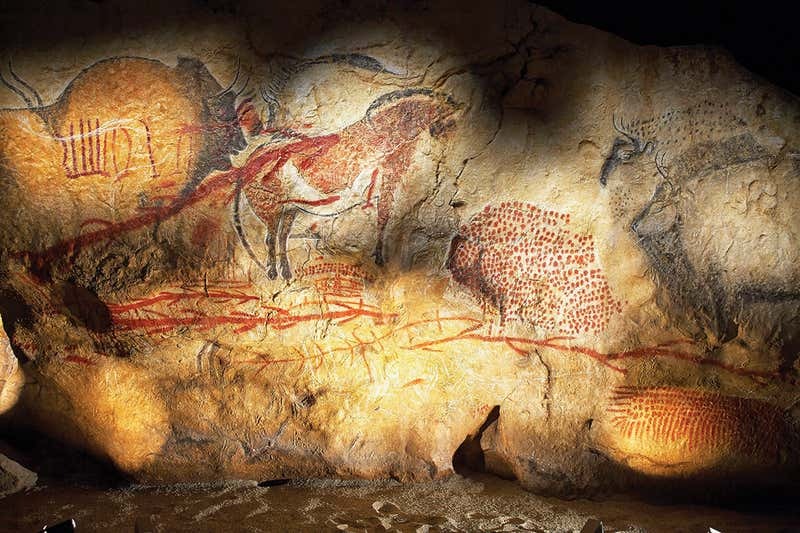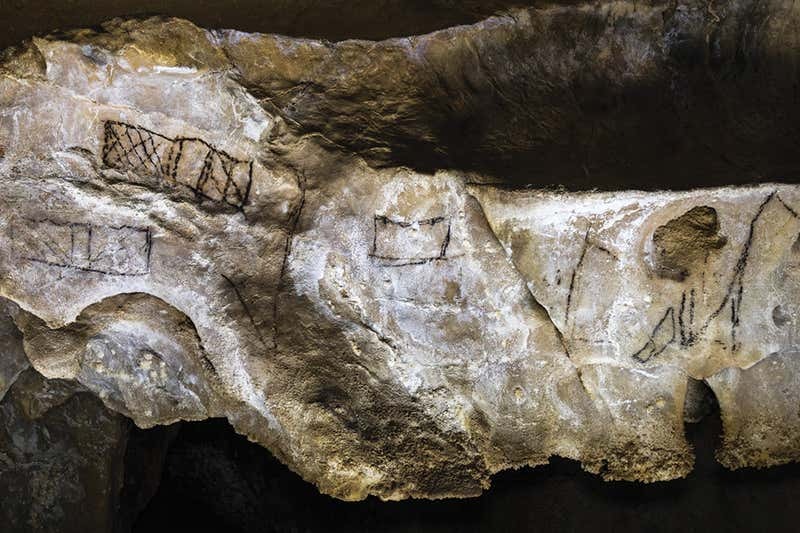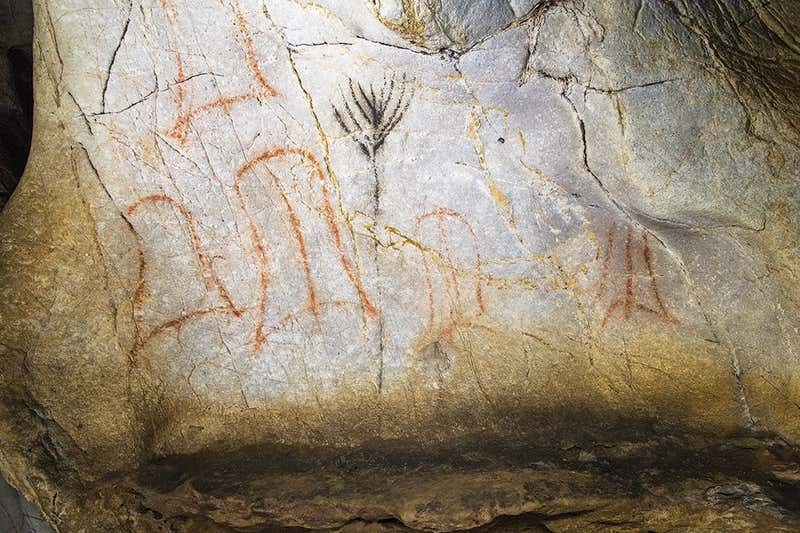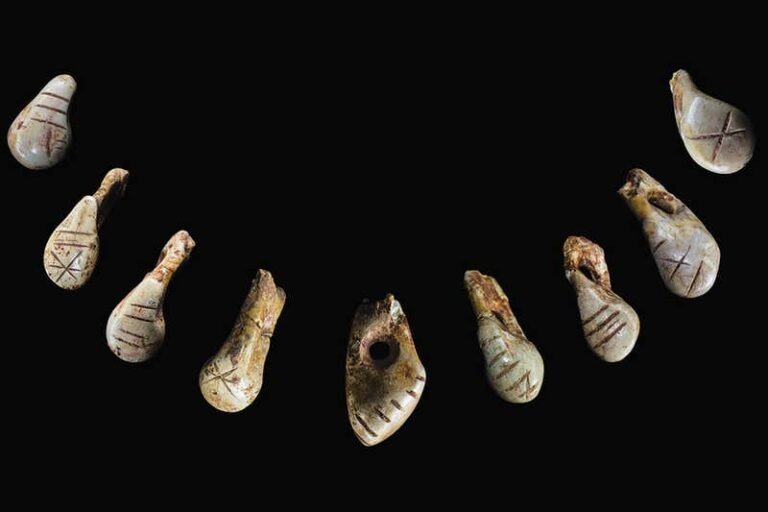A Recent Scientist article by Alison George – Code hidden in Stone Age art may be the root of human writing – reports on the painstaking investigation of Europe’s cave art which has revealed 32 shapes and lines that crop up again and again and could be the world’s oldest code.

‘When she first saw the necklace, Genevieve von Petzinger feared the trip halfway around the globe to the French village of Les Eyzies-de-Tayac had been in vain.
The dozens of ancient deer teeth laid out before her, each one pierced like a bead, looked roughly the same. It was only when she flipped one over that the hairs on the back of her neck stood up. On the reverse were three etched symbols: a line, an X and another line.
Von Petzinger, a palaeoanthropologist from the University of Victoria in Canada is spearheading an unusual study of cave art. Her interest lies not in the breathtaking paintings of bulls, horses and bison that usually spring to mind, but in the smaller, geometric symbols frequently found alongside them.
Her work has convinced her that far from being random doodles, the simple shapes represent a fundamental shift in our ancestors’ mental skills.

Black tectiforms at Las Chimeneas, Spain
The claviform symbol appears in the Magdalenian caves of France & Spain. There are 15 claviform symbols in Niaux alone.
The first formal writing system that we know of is the 5000-year-old cuneiform script of the ancient city of Uruk in what is now Iraq. But it and other systems like it – such as Egyptian hieroglyphs – are complex and didn’t emerge from a vacuum.
There must have been an earlier time when people first started playing with simple abstract signs. For years, von Petzinger has wondered if the circles, triangles and squiggles that humans began leaving on cave walls 40,000 years ago represent that special time in our history – the creation of the first human code.’
Between 2013 and 2016, von Petzinger visited 52 caves in France, Spain, Italy and Portugal. The symbols she found ranged from dots, lines, triangles, squares and zigzags to more complex forms like ladder shapes, hand stencils, tectiforms and penniforms. Her most startling finding was how few signs there were – just 32 in all of Europe. There was consistency in the use of symbols.

At El Castillo in Spain, a black penniform and bell-shapes
With von Petzinger’s database, she can now see trends – signs in regions, new signs appearing, other signs disappearing. In other words, cultural changes can be discerned, pointing at migration and trade routes.
Further research: some of the most stunning cave art in Europe was only discovered in 1985 when divers found the mouth of the Cosquer cave 37 metres below the Mediterranean coastline near Marseilles in southern France.
Its entrance had been submerged as sea levels rose after the last ice age. What other similar caves are waiting to be discovered? With this in mind, von Petzinger has teamed up with David Lang of OpenROV in Berkeley, California, which makes low-cost underwater robots.
Next year, they plan to use them to hunt for submerged cave entrances off Spain’s north coast. The region is rich in painted caves, many close to the shoreline, so it seems likely that others could be hiding below the waves. If they find any, the pair will send in the remote-controlled mini-submarines, armed with cameras, to safely explore the new sites.
Moreover, as well as the symbols painted, drawn and engraved onto the cave walls, von Petzinger plans to expand her ‘Stone Age dictionary’ by analysing the wealth of signs on portable objects, such as the etched deer teeth from Saint-Germain-de-la-Rivière in France.

At El Castillo in Spain, a black penniform and bell-shapes
With von Petzinger’s database, she can now see trends – signs in regions, new signs appearing, other signs disappearing. In other words, cultural changes can be discerned, pointing at migration and trade routes.
Further research: some of the most stunning cave art in Europe was only discovered in 1985 when divers found the mouth of the Cosquer cave 37 metres below the Mediterranean coastline near Marseilles in southern France.
Its entrance had been submerged as sea levels rose after the last ice age. What other similar caves are waiting to be discovered? With this in mind, von Petzinger has teamed up with David Lang of OpenROV in Berkeley, California, which makes low-cost underwater robots.
Next year, they plan to use them to hunt for submerged cave entrances off Spain’s north coast. The region is rich in painted caves, many close to the shoreline, so it seems likely that others could be hiding below the waves. If they find any, the pair will send in the remote-controlled mini-submarines, armed with cameras, to safely explore the new sites.
Moreover, as well as the symbols painted, drawn and engraved onto the cave walls, von Petzinger plans to expand her ‘Stone Age dictionary’ by analysing the wealth of signs on portable objects, such as the etched deer teeth from Saint-Germain-de-la-Rivière in France.
Leave a Reply